Do you know what is Kani? A Kani is a type of shawl woven from pure pashmina and horse hair or silk. It originated from the Kashmir valley in India, and the technique of weaving is known as Kani weaving. Kashmiri shawls are exquisite, most of them highly embellished, with beautiful patterns and bright and cheerful colours that depict the culture of Kashmir.
What is Kani?
Kani is a hand-woven cloth designed in India’s Kani village of Jammu and Kashmir. It contains complex geometrical designs and motifs crafted using a specific method of manual weaving where each string is dyed individually before being incorporated into the weaving process. Interestingly, Kani shawls are famous due to their intricate work and traditional motifs such as nature, the maps of Kashmir, or the Mughal art used in the production. Today, Kani textiles are admired worldwide for their high quality and uniqueness.
Symbolism in Kani Designs
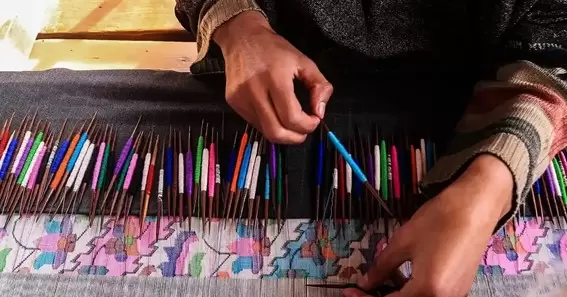
The illustration of shading and blending brings out intricate patterns called Kani, which are Kashmiri weaving symbols that define cultural lessons. Every detail of the pattern and the shade of color employed has a meaning that often reflects different elements of nature, traditions, and even religion.
Other art forms can be associated with specific, definite meanings; for instance, geometric shapes may be used to reflect the concept of harmony and balance, and floral images are regarded as symbols of beauty and prosperity. Kani weaving transforms into a form of narrating folklore and historical customs that have existed for centuries in Kashmir.
What is Kani Shawls in Fashion
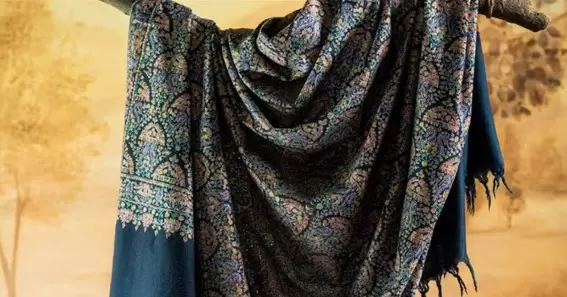
Kani shawls, particularly famous for their fine weaving and elaborate patterns, have become fashion accessories that people across diverse cultures and age groups desire. The perennial appeal and its craftsmanship make them suitable for use with formals and casuals. Wearing a Kani shawl instantly elevates the clothing piece and brings a touch of elegance and sophistication to the whole ensemble.
Economic Impact of Kani Weaving
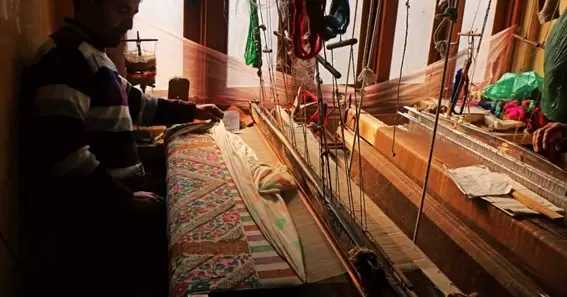
The economic effects of Kani weaving are not limited to the weaving art itself, as many families depend on it for their earnings in the Kani valley of Kashmir. The technique employed in constructing the Kani fabrics continues to support marketing and economic practices that produce income for spinners, dyers, weavers, and artisans in each phase.
Furthermore, Kani shawls are strongly associated with the area’s tourism, with many tourists visiting the region primarily observing the skills involved in making the shawls or purchasing genuine Kani shawls. Hence, Kani weaving occupies an essential position in the economy and culture of Kashmir valley.
Global Recognition of Kani Textiles
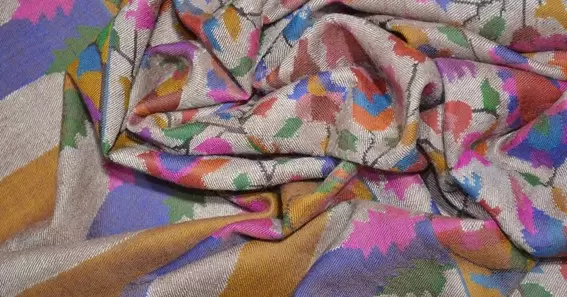
The Kani people have gained quite a reputation for making some of the most beautiful and unique textiles in the world. Well-known as the world’s finest and textured hand-woven shawls, Kani shawls are the choice of the glamour world and fine art lovers.
They have been upgraded into beautiful pieces of traditional artistic work by being displayed in aesthetic exhibitions, fashion shows, and museums. Also, the integration with fashion houses and designers from various parts of the world has assisted in requesting and promoting Kani fabrics to guarantee they are acclaimed worldwide.
Contemporary Innovations in Kani Weaving

Some of the newer features found in Kani weaving bring new life into the craft by integrating old and new ideas. The artisan has dynamics in terms of materials, shades, and patterns but without neglecting the philosophy of craftwork. Technological improvements have also pushed for increased production rates without necessarily affecting the quality, hence making Kani textiles products available for a larger market.
Cultural Significance of Kani Weaving
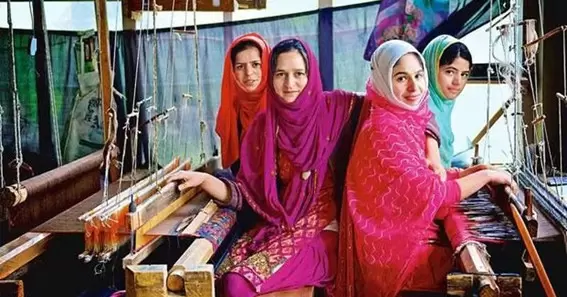
The Kani weaving process has excellent historical relevance and represents the rich culture of Kashmir. This art form has been passed from one generation to the other and is a pulling display of the area’s wealth of talents, customs, and folklore. Traditional patterns inspire every kaftan design with references to the Kashmiri community, be it symbols of ecology or religious foundational systems.
Conclusion
Thus, Kani weaving reflects a tradition passed down across generations in the Kashmir valley. Apart from being an art form, Kani textiles are purposefully woven with complex patterns and symbolic depictions that revolve around the region’s nature, tradition, and spirituality. The economic benefits that Kani weaving offers have helped the local people and encouraged the tourist industry.
The fact that Kani has garnered world fame puts Kashmiri handicrafts on the international level. As the most contemporary innovations give life to this ancient craft, Kani weaving is a bright and enduring example of the pride of arts and crafts in Kashmir and maybe worldwide.
FAQ
What is Kani weaving?
Kani is a handloom fabric weaving practiced and developed by the people of Kani village in Kashmir, India. It represents a unique Kani design.
What makes Kani weaving distinctive from the other forms of weaving practices?
Kani weaving involves attaching individual strings and dyeing each string before they are threaded in the weaving process, creating elaborate motifs. In contrast, the other weaving has set motifs of dyed yarns.
What is Kani Shawls’ original purpose?
Kani shawls are most commonly employed as rich buff Random House or cover-ups,
admired for their delicate artistry and connoisseur value. They are also used during celebrations like weddings and festivals, where they are considered as gifts.
How many months or years does it take to knit one Kani shawl?
A Kani shawl can take days or months to make, depending on the design, size, and technique used by the Kani weaver.
Where can I get the original Kani shawls from?
The original Kani shawls can be bought from shops of genuine local producers and artisans in the Kashmir region or web-based stores focusing on Indian textiles and crafts.
What measures have been taken to safeguard the art of Kani weaving?
Different non-governmental organizations and government departments in Kashmir are also trying to develop new Kani wearers, create awareness about Kani weaving among the masses, and preserve the cultural significance of this type of weaving.
Sources:










